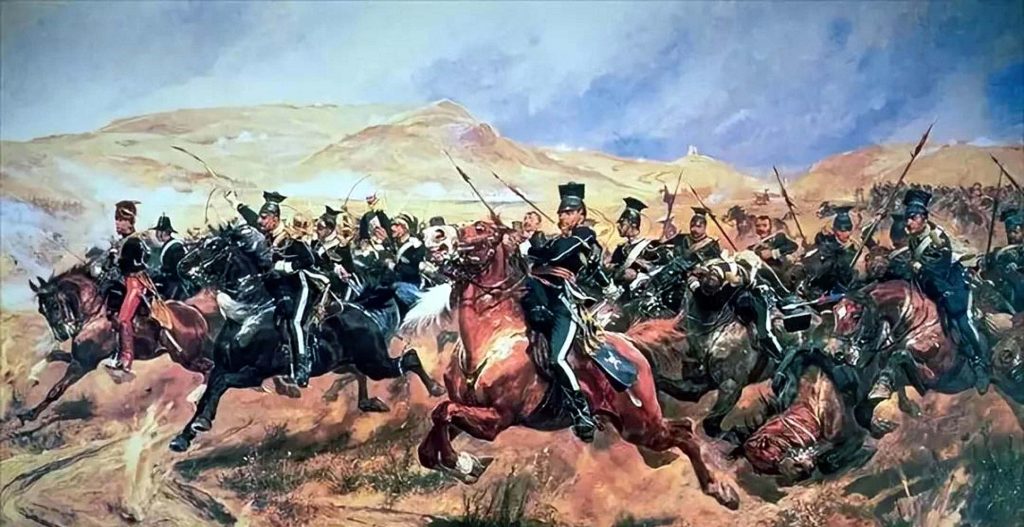
“Forward, the Light Brigade!
Was there a man dismayed?
Not though the soldier knew
Someone had blundered.”
Alfred, Lord Tennyson’s poem, The Charge of the Light Brigade, immortalizes an ill-fated British cavalry charge during the Crimean War. The poem mostly celebrates the bravery and glory of the officers who participated in the charge, but in a famous line, Tennyson makes it clear that those who died that day did so because “someone had blundered.”
The charge itself should never have happened. It was the end result of a brilliant strategic decision followed by poor communication and execution.
The mistakes made that day are revealing and serve as a cautionary tale for leaders today.
On October 25, 1854, Lord Raglan stood high on a bluff and surveyed the battlefield spread out on the plain 600 feet below. He had taken up this position for its sweeping view. From these heights, he could see the movements and positions of not only the British infantry and cavalry, which he commanded, but those of the enemy Russian forces as well.
To control the movement of troops and execute his strategy, he issued orders on scraps of paper which his aides delivered by horseback to the various commanding officers.
Raglan looked directly down on a valley. On one end, the area closest to him, amassed the bulk of the British army. On the far end of the valley, the Russian army was entrenched with artillery and cavalry.
Separating the two armies was a level plain one mile in length.
Raglan understood a direct assault on the Russian forces would be disastrous. After all, the Russian controlled the heights on both sides of the valley.
Raglan’s strategy was therefore to first take out the Russian guns on the heights. He ordered the Heavy Cavalry brigade to attack the Russian guns on the hills high above the valley, directly opposite from the hill he was standing on. The Heavy Brigade successfully forced the Russians to retreat and abandon the cannons.
The battle was turning in Raglan’s favor.
Next, Raglan ordered the Light Cavalry brigade to finish the job by ascending the heights and securing the area so the Russians could not carry off their guns. The Light Brigade was stationed in the valley below and was unaware of the activity on the heights.
Lord Raglan scribbled out orders:
“Lord Raglan wishes the cavalry to advance rapidly to the front – follow the enemy and try to prevent the enemy carrying away the guns. Troop Horse Artillery may accompany. French cavalry in on your left. Immediate.”
If you find the orders to be a bit opaque and confusing, you’re not alone.
Lord Raglan handed the orders to an aide on horseback who immediately set off. As the aide galloped away, Raglan shouted “Tell Lord Lucan, the cavalry is to attack immediately.”
The aide descended the bluff to the valley below and quickly made his way to Lord Lucan, the commander of the cavalry.
Lucan read the orders slowly. Then read them again.
It was well known that the aide and Lucan had history between them and despised one another. Lucan’s hesitancy was infuriating to the aide.
“Lord Raglan’s orders are that the cavalry should attack immediately,” the aide shouted.
“Attack, sir! Attack what? What guns, sir? Where and what to do?” Lucan responded.
From Lucan’s vantage point, standing on the valley floor, he could not see the activity on the heights and was unaware the Heavy Cavalry had attacked the Russian guns there. As he surveyed the battlefield, he could not see any guns being carried away by the enemy.
What was perfectly clear to Raglan, standing as he was high above the battle, was perfectly confusing to the commander of the cavalry stationed on the valley floor.
The aide grew furious at Lucan’s resistance to the order.
“There, my Lord!” the aide shouted as he made a gesture with his arm more of rage than a precise direction.
“There are you enemy! There are your guns!”
The only enemy guns in sight were at the far end of the valley, across the one mile level plain, where the Russian troops were entrenched. These were, presumably, the guns Lord Raglan was referencing in his orders, and the aide seemed to gesture in that general direction.
Lord Lucan dropped his resistance and decided to follow the order. He walked calmly to the officer who was to lead the charge, Lord Cardigan, and passed on the Commander-in-Chief’s order.
“Certainly” replied Cardigan in a calm voice. “But allow me to point out to you that the Russians have a battery in the valley on our front, and batteries and rifleman on each flank.”
“I know it,” replied Lucan, “But Lord Raglan will have it, we have no choice but to obey.”
The wheel was set in motion. Cardigan prepared the Light Brigade, positioning each squad in its proper place, with himself in front, and then issued the order, “The Brigade will advance.”
The aide who had delivered the order from Raglan also took up his place in line and prepared to join the charge.
As Cardigan led the Light Brigade across the plain, the aide had a sense that something was wrong. The direction of the charge was not up the hill toward the Russian guns that had been abandoned, as Raglan intended, rather it was moving directly into the jaws of death.
The aide rushed ahead on his horse, in an attempt to inform Cardigan of the mistake. As he approached Cardigan he waved his sword above his head and shouted, trying desperately to inform the men they were going the wrong way. But no one could hear his words. The Russians had, by this time, opened fire. The boom and whiz from the Russian guns drowned him out. The aide was struck by shrapnel and died immediately, being one of the first to go down.
Thus, the Light Brigade continued its charge toward imminent death.
Lord Raglan and his staff, surveying the movement of the Light Brigade from high above the valley, did not immediately realize that something was wrong. Yes, the charge was heading a little to the left of the intended path, but they figured once it gained speed it would sweep around to the right and ascend the hills to attack the heights. Instead, they watched in dread as the Light Brigade continued to charge across the plain with a direct frontal attack on the Russian batteries.
The Light Bridge faced withering fire from three sides.
Of the 673 men who charged across the valley that day, less than 200 returned.
This story, as tragic as it is, has much to teach us about decision making and execution, the two fundamental activities of business.
As a leader, what we see from our vantage point is not what our people see from their vantage point. Where we are positioned in the hierarchy, from CEO down to individual contributor, impacts the information we get access to and the context we understand. As leaders, it’s imperative to communicate strategy and context all the way down the chain of command.
A strategic initiative that makes perfect sense to a CEO may look completely absurd to a frontline manager. Therefore, the clarity and thoroughness of our communication is critical. It’s not enough to issue orders from on high and expect things to unfold according to plan.
A great decision is only as good as the execution. We may have the right strategy, and we may identify the perfect strategic initiative to implement that strategy, but unless we can execute on that initiative, it doesn’t matter. Too often leaders invest 90% of their effort into making the decision and 10% into execution. The outcome is dependent on both the decision and the execution.
Encourage people to voice their opinion, especially when they disagree with you. One of the great tragedies of the Charge of the Light Brigade is that several officers along the chain of command recognized the folly of Lord Raglan’s order, as they understood it, yet didn’t pause long enough to clarify their misunderstanding. This highlights the danger of justifying action because “that’s what the executives want.” The bigger the downside, the more imperative it is for leaders to push back and demand clarity. Encourage dissent, especially when the stakes are high.
A culture of trust. When critical information needs to be communicated between people who lack trust, something is always lost in the translation. It’s important to build trust before the heat of battle. When the pressure builds, as your team gets closer to launching the new product or completing the project, a culture of trust will help ensure communication is clear and everyone is willing to help pitch in.
Sources
- The Destruction of Lord Raglan by Christopher Hibbert
- The Charge of the Light Brigade (history)
- The Charge of the Light Brigade (poem)
Related Articles
- Benjamin Franklin: 10 Lessons on Wisdom
- Viktor Frankl: 5 Lessons from Man’s Search for Meaning
- Ulysses S. Grant: 12 Leadership Lessons
- Lewis & Clark: 5 Leadership Lessons
- Google: 8 Most Important Qualities of Leadership
- Phil Knight: 7 Leadership Lessons from Nike
About the Author
Sean P. Murray is an author, speaker and consultant in the areas of leadership development and talent management. Learn more at RealTime Performance. He also hosts The Good Life Podcast on The Investor’s Podcast Network.
Follow Me on Twitter: @seanpmurray111
Join my mailing list and be updated when I publish new articles.


This piece of writing presents clear idea for the new
people of blogging, that in fact how to do blogging.
I want to thank you for sharing such a good information that provides you, that’s great.